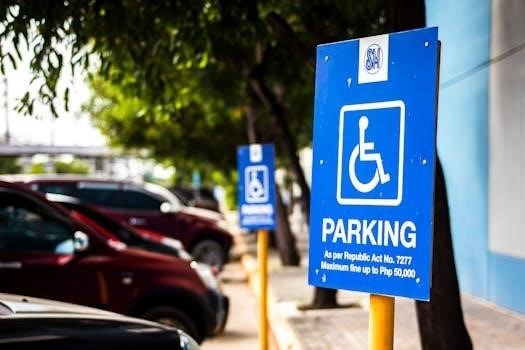Building Safety Act 2022⁚ Overview
The Building Safety Act 2022 is a landmark piece of UK legislation aiming to revolutionise building design, construction, and management. It focuses on enhancing safety and introduces significant changes to building regulations.
Landmark Legislation and Objectives
The Building Safety Act 2022 represents a significant overhaul of building regulations in the UK. This landmark legislation aims to transform how buildings are designed, constructed, and managed, with a primary focus on enhancing safety for residents and homeowners. The act introduces a range of measures to ensure higher standards of building safety across the board. Key objectives include establishing clear lines of responsibility, improving building competence, and implementing more robust safety measures throughout the building lifecycle. The legislation seeks to create a more accountable and transparent system within the building industry to prevent future tragedies.

Key Changes Introduced by the Act
The Act introduces new competency requirements for building professionals and enhances safety measures in design and construction. It also creates a new regulatory regime for building safety.
Competency Requirements for Building Professionals
The Building Safety Act 2022 mandates new competency requirements for all building professionals involved in design and construction. This includes contractors and designers who must now demonstrate a higher level of skill and knowledge in building safety. The Act seeks to ensure that those responsible for the creation and maintenance of buildings are suitably qualified. These measures aim to improve the overall quality and safety of buildings. It is crucial for professionals to meet these new requirements to comply with the legislation. This will foster a culture of competence and accountability in the built environment industry.
Enhanced Safety Measures in Design and Construction
The Building Safety Act 2022 introduces enhanced safety measures throughout the design and construction phases. These measures include stricter regulations and oversight to prevent safety issues from arising. The Act aims to ensure that buildings are designed and built with safety as a primary consideration, from the initial planning stages through to completion. This involves implementing more rigorous building control procedures and introducing more robust materials and methods. These enhancements seek to minimize the risk of future safety incidents in the construction sector, establishing a proactive approach to building safety.
Implementation Timeline
The Act received Royal Assent on April 28, 2022, with initial enforcement beginning April 1, 2023. A phased rollout of provisions is underway, ensuring gradual implementation of the new regulations.
Royal Assent and Initial Enforcement
The Building Safety Act 2022 marked a significant milestone when it received Royal Assent on April 28, 2022, officially becoming law. This crucial step paved the way for the implementation of its groundbreaking reforms. The initial phase of enforcement commenced on April 1, 2023, signaling the start of a new era in building safety regulations. This early stage focused on establishing key foundational elements of the Act, setting the stage for a more comprehensive and phased rollout of the remaining provisions. These initial steps were vital for transitioning the industry towards enhanced safety standards and practices, ensuring that the reforms were not only enacted but also actively implemented across the sector.
Phased Rollout of Provisions
Following the Royal Assent and initial enforcement, the Building Safety Act 2022 is being implemented through a carefully planned phased rollout. This approach ensures that the complex and wide-ranging changes are introduced gradually, allowing the construction and building management sectors adequate time to adapt and comply. The phased implementation involves a series of stages, each bringing specific provisions of the Act into effect. This methodical approach helps to minimize disruption and allows stakeholders to adjust their practices in accordance with the new requirements. The detailed timeline for each phase is crucial for effective preparation, underscoring the importance of staying informed about the ongoing changes.

Impact on Stakeholders
The Act significantly impacts building owners, managers, clients, designers, and contractors. It introduces new responsibilities and obligations that these stakeholders must adhere to for building safety;
Responsibilities of Building Owners and Managers
The Building Safety Act 2022 places significant new responsibilities on building owners and managers. They are now tasked with ensuring the safety of their buildings and the well-being of residents. This includes managing buildings better, implementing enhanced safety measures, and maintaining detailed records of safety-related information. The Act also mandates that owners and managers take a proactive approach to building safety, addressing potential hazards promptly. They must also ensure that they have the necessary competence and resources to manage building safety effectively; The legislation also requires clear accountability and compliance, with potential penalties for non-compliance. Ultimately, the goal is to improve safety standards and instill a culture of responsibility.
Obligations of Clients, Designers, and Contractors
The Building Safety Act 2022 introduces new obligations for clients, designers, and contractors involved in building projects. Clients commissioning building work are responsible for ensuring projects meet safety requirements. Designers are now accountable for creating safe and compliant designs, while contractors are obliged to build according to these designs and adhere to safety regulations. If any of these key parties change during the construction process, this must also be reported. The Act emphasizes competence and accountability throughout the design and construction phases. Failure to meet these obligations can result in penalties and legal action. This collaborative responsibility aims to enhance building safety at every stage.

Response to Grenfell Inquiry
The Building Safety Act 2022 is a direct response to the Grenfell Tower fire and the subsequent inquiry led by Dame Judith Hackitt. It addresses key safety recommendations.
Addressing Recommendations by Dame Judith Hackitt
The Building Safety Act 2022 directly incorporates the recommendations from Dame Judith Hackitt’s independent review of building regulations and fire safety. This review followed the tragic Grenfell Tower fire and identified critical failings in the existing system. The Act aims to rectify these deficiencies by establishing a more robust regulatory framework. It introduces new roles and responsibilities, particularly for those involved in higher-risk buildings. These changes are intended to improve accountability and ensure that buildings are safe for residents. The legislation seeks to foster a culture of safety throughout the entire building lifecycle, from design to occupation, reflecting the core findings of Hackitt’s report.

Geographical Scope
The Building Safety Act 2022 applies to England and Wales. Although the core principles are consistent, there may be some variations in the specific implementation across these two nations.
Application in England and Wales
The Building Safety Act 2022 has a defined geographical reach, specifically encompassing both England and Wales. This means that the core tenets and regulations established within the Act are directly applicable within these two countries. However, it is important to note that while the fundamental framework remains consistent, there may be nuanced differences in the way the Act is implemented and enforced at a local level. These variations could stem from specific regional considerations, existing building practices, or administrative protocols. Stakeholders operating in either England or Wales should therefore familiarize themselves with any regional guidance to ensure full compliance.
